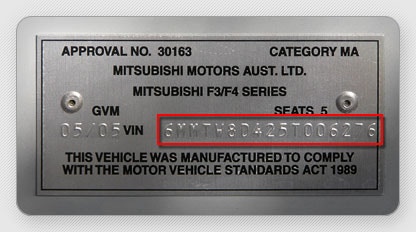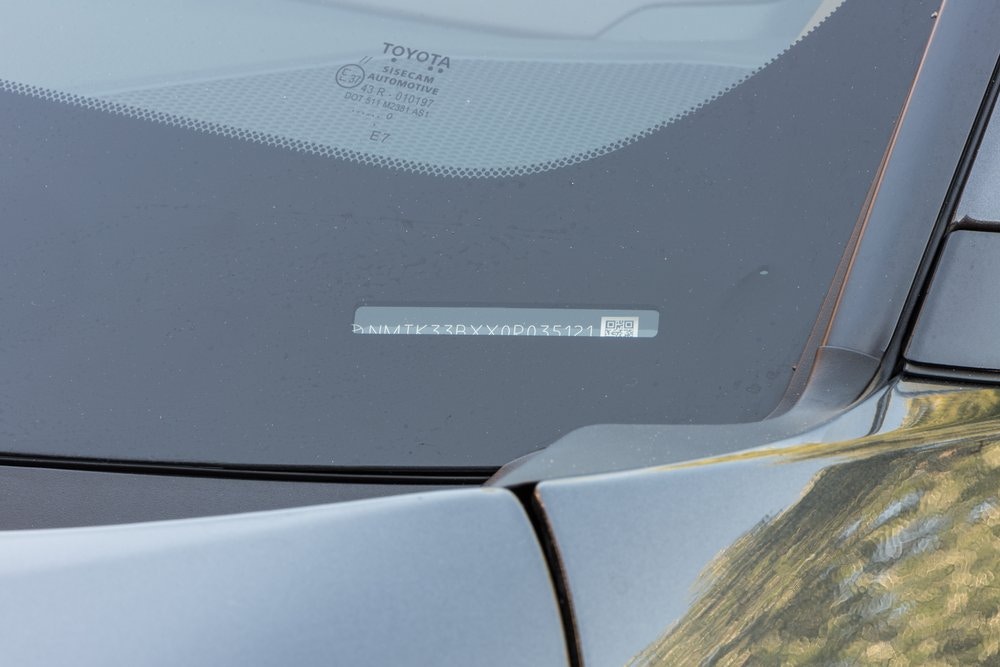What is my car’s VIN and how do I find it?
All registered vehicles in the UK have a unique, stamped-in vehicle identification number (VIN) and registration number. The VIN contains details about your car’s features, spec, and manufacturer, and can be used to track recalls, registrations, warranty claims, theft, and insurance coverage.
‘VINs’ are often referred to as ‘VIN numbers’. (It’s like ‘PIN number’ – you don’t actually have to say ‘number’ twice, although many people do!)
- What is a VIN number?
- What does a VIN number look like?
- Where is the VIN number on a car?
- Why is my car’s VIN important?
- What do I need my VIN for?
- Can I change my car’s VIN?
- How do I background check a car without the VIN number?

What is a VIN number?
Your VIN is a unique, 17-character code that identifies your car. The VIN contains information about your car’s make, model, and year, as well as the country where it was manufactured and other important details.
What does a VIN number look like?

Contrary to its name, your VIN number is composed of both numbers and letters. Each corresponds to a code that describes your car. The letters and numbers are allocated as follows:
1XXXX11XXXX111111
The first character is always a number. This describes where the car was built, e.g. UK.
The second and third characters are letters. They denote the car manufacturer, e.g. Citroën.
Characters four through eight are a mix of letters and numbers detailing the brand, engine size, and engine, transmission, and fuel type.
The ninth character, a letter, is a security code certifying the VIN as approved by your car’s manufacturer.
The tenth character, also a letter, signifies the year of your car model.
The eleventh character, a letter, points to the plant where the vehicle was built.
The last six characters are all numbers and make up the car’s unique serial number.
Where is the VIN number on a car?
You can usually find your VIN on three locations in your vehicle:
1. On your car’s dashboard, near the windshield on the driver’s side.
2. Stamped on your car’s chassis. This is why VIN is also called the ‘chassis number’.
3. In our car’s V5C logbook, as well as your insurance paperwork.

Why is my car’s VIN important?
Your car’s VIN is the story of your vehicle, from where it was produced to its unique specifications. Your VIN stays the same throughout your car’s lifespan, regardless of whether it’s bought and sold, if its reg gets changed, or if it’s exported to another country.
Since your VIN is a permanent identifier for your vehicle, it’s used to digitally save official car records. This information can be checked using public and professional sources. When you’re selling your vehicle, potential buyers will likely conduct a background check based on the information logged against the VIN.
With your VIN, potential buyers are able to see your car’s proof of service history, C02 rating, financing agreement, previous owners, any changes to the associated reg (e.g. personalised number plates), and whether the car’s been involved in any accidents or criminal activity.
People cannot view insurance claims based on your VIN, unless those claims ended up with a write-off.
What do I need my VIN for?
You most likely won’t need to provide your VIN when doing routine maintenance or selling your car, since this information can be accessed online based on your car’s reg. However, it’s still important to know how to locate your VIN and what information it contains.
If you are buying or have bought a used vehicle and want to background check it yourself, you can purchase a report from the DVLA or have an HPI check. You can conduct a background check with both a reg and a VIN; however, a VIN check may contain more information.
Can I change my car’s VIN?
No, you cannot change your car’s VIN number. This unique identifier is attached to your vehicle from the point of production onwards, and remains the same even if you change your reg or modify the car.
How do I background check a car without the VIN number?
If you’re in the UK, you should be able to locate your car’s VIN using the above tips or by searching your car’s reg on the DVLA website. Once you have the VIN, you can purchase an HPI check, which will look for any registered criminal activity or insurance write-offs, changes in reg, past transfers of ownership, and more.
If your HPI report or other background check reveals information that doesn’t match the car, including its reg, then you may be looking at a cloned car or a scam. Remember, the VIN should be stamped on the chassis, displayed on the dash, and printed in the V5C logbook. Any reg plate changes should be registered against the VIN, as well as any physical modifications to the car.
If you think your car could have been ‘cloned’ (given another car’s VIN), it’s advisable to contact the police and the DVLA. If you own a cloned car, you could be issued with a Penalty Charge Notice. However, if you report the crime as soon as you’re suspicious, you may avoid this liability.

Ready to sell?
Need to sell your car, or want to understand more about documentation or maintenance? Check out more of our guides here, covering everything from the paperwork you need when buying and selling, to various notices you may need to file with the UK’s driver and vehicle licensing agency.
- Car ownership – ways to own and finance a car
- How to keep your car looking new
- How to transfer car ownership
- How to look after & maintain a car
- How to replace lost, broken, or stolen car keys – the ultimate guide
- Top 15 ways to cut your motoring costs
- Car depreciation – the ultimate guide
- HPI check – the ultimate guide
- What documents do I need to sell a car?
- V5C – The ultimate guide
- Selling a car without a V5C
- How to replace lost car documents – the ultimate guide
- How to cancel road tax – the ultimate guide
- Car tax refunds: a guide